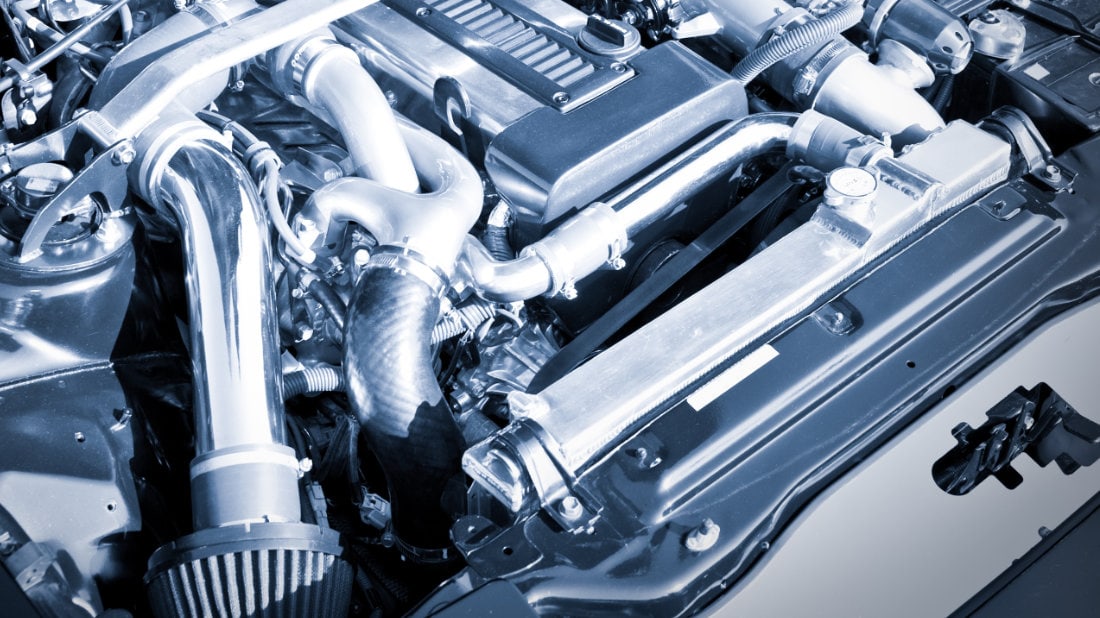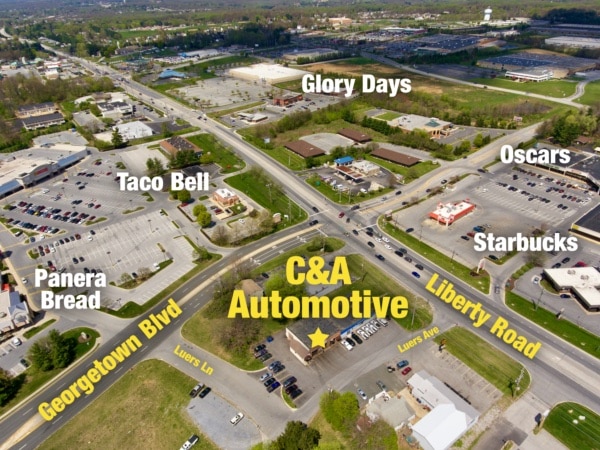Cooling System Repair
On average, a four-cylinder vehicle travelling at a speed of 50 mph will produce 4,000 explosions per minute in its engine. These explosions create a massive amount of heat that could destroy the engine if not controlled properly–that’s where the cooling system comes in. A vehicle’s cooling system circulates a liquid coolant through the engine and then out to the radiator where it is cooled by air coming through the front grill.
The main components of a cooling system include passages within the engine block and heads, a water pump to circulate coolant, a thermostat to monitor coolant temperature, and a radiator to cool the liquid after it has travelled through the engine. As the anti-freeze travels through these passages, it picks up heat from the engine and carries it away to the radiator where it is cooled. Once cooled, the liquid is sent back through the engine.
It’s important to maintain coolant levels to prevent engine overheating and potential damage. At C&A Automotive, we recommend that coolant be changed every 24,000 miles and that any cracked, leaking, or brittle hoses be replaced at the same time. There are specific requirements for mixing coolant, if you feel unsure about them bring your car to our service and repair center located in Eldersburg, MD—we’re always happy to help!
Radiator
Engines generate an enormous amount of heat and must be cooled continuously to function properly. The vehicle’s cooling system controls engine heat by circulating a liquid coolant throughout the engine. Eventually, however, the coolant will become too hot and will have to cool off. When this occurs, the coolant is transferred to the radiator, which is located at the front of the vehicle near the grill. Once in the radiator, air coming in from the grill cools the fluid. Once fully cooled, the process will start over and the fluid will be re-circulated throughout the engine.
Without the radiator, the coolant would continue to circulate and would eventually cause the engine to overheat. Overtime, leaks can form in different components of the radiator. At the first sign of leaks it’s important to have them fixed to prevent expensive damage to the engine. C&A Automotive prides itself on providing the Eldersburg, MD area with superior service at the best possible price. If you’re experiencing any issues with your radiator, come by C&A Automotive, our expert technicians are happy to help!
Thermostat
The cooling system’s thermostat is simply a valve measures and regulates the temperature of coolant. The purpose of coolant is too cool off the engine as it burns fuel. It does this by circulating through the engine, absorbing heat, and carrying it to the radiator. Once in the radiator, the coolant is cooled by the air stream from the vehicle’s grill and then re-circulated through the engine. The thermostat’s job is to determine when the coolant has absorbed enough heat from the engine and can be released into the radiator and vice versa.
If it’s not hot enough, the thermostat will seal the radiator, forcing the coolant to circulate throughout the engine. If the coolant is too hot in the radiator, it won’t be released. If the thermostat is stuck open, the engine will run cooler than it should and use more fuel. Conversely, a thermostat that is stuck closed will cause the engine to overheat and could cause serious damage to the engine.
Symptoms of a bad thermostat include a knocking sound when accelerating, low temperature gauge readings, overheating, decrease in fuel economy, and a malfunctioning heater. If you experience any of these issues, bring your car in a soon as possible. C&A Automotive’s service and repair center is located in Eldersburg, MD.
Coolant
As the engine burns fuel to generate mechanical force it creates an enormous amount of heat. If not dealt with, this heat would destroy the engine within a matter of minutes. To solve this problem, a liquid is used that can withstand temperatures above 250 degrees without boiling and temperatures below zero without freezing. The liquid is generally a mixture of antifreeze and water that also contains additives to prevent rust and corrosion. This coolant is circulated through the engine where it picks up heat and carries it to the radiator.
Once in the radiator, air coming in from the grill cools the liquid and it is re-circulated. Overtime, the coolant can become corrosive and, if not flushed, can cause problems in the cooling system. Corrosive coolant will eventually lead to overheating and coolant leaks. At C&A Automotive, we recommend that your vehicle’s coolant be flushed on a regular basis to prevent unnecessary damage to the cooling system. Any leaking, brittle, spongy, or cracked hoses should be replaced before the antifreeze is replaced.















